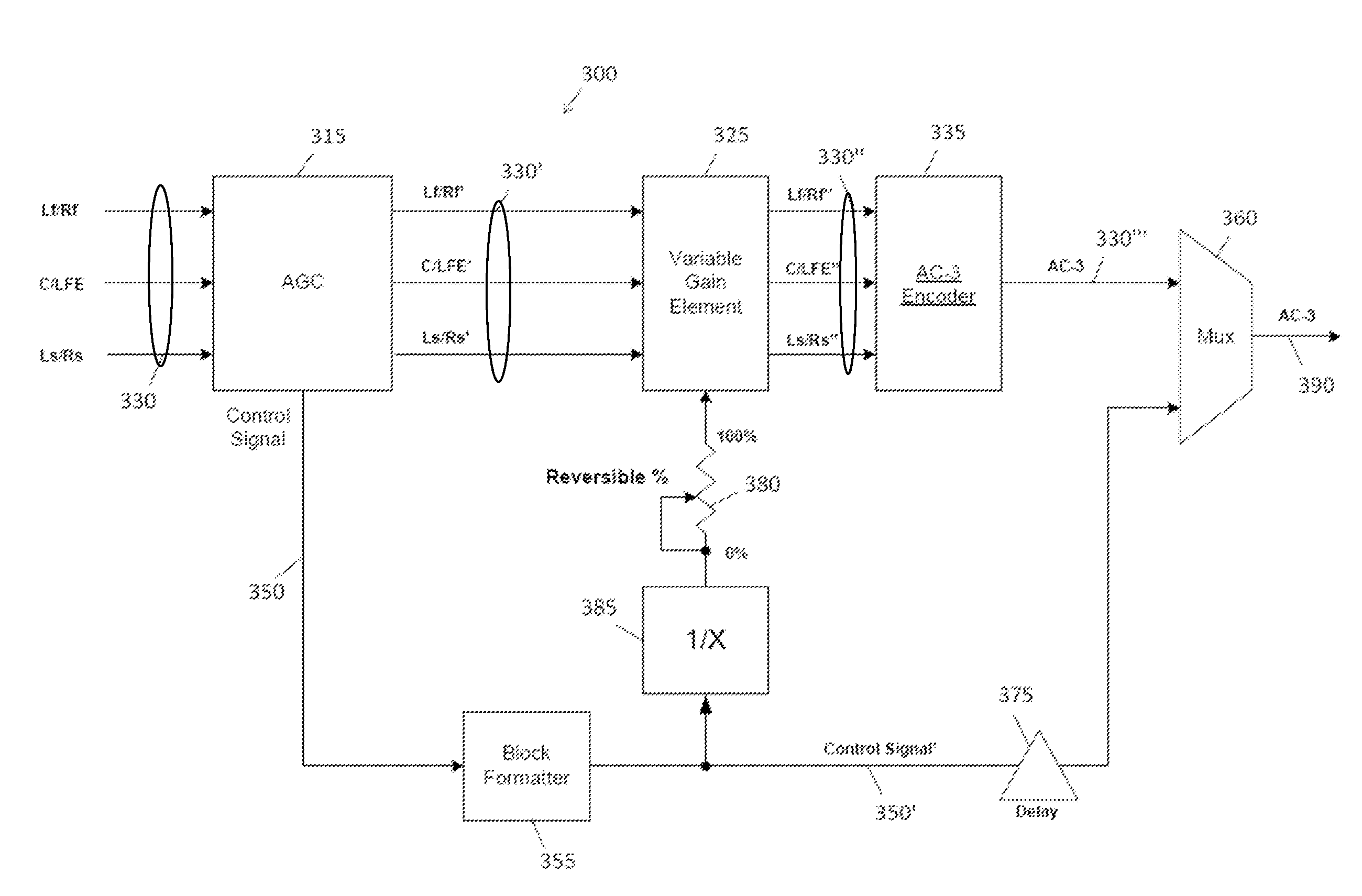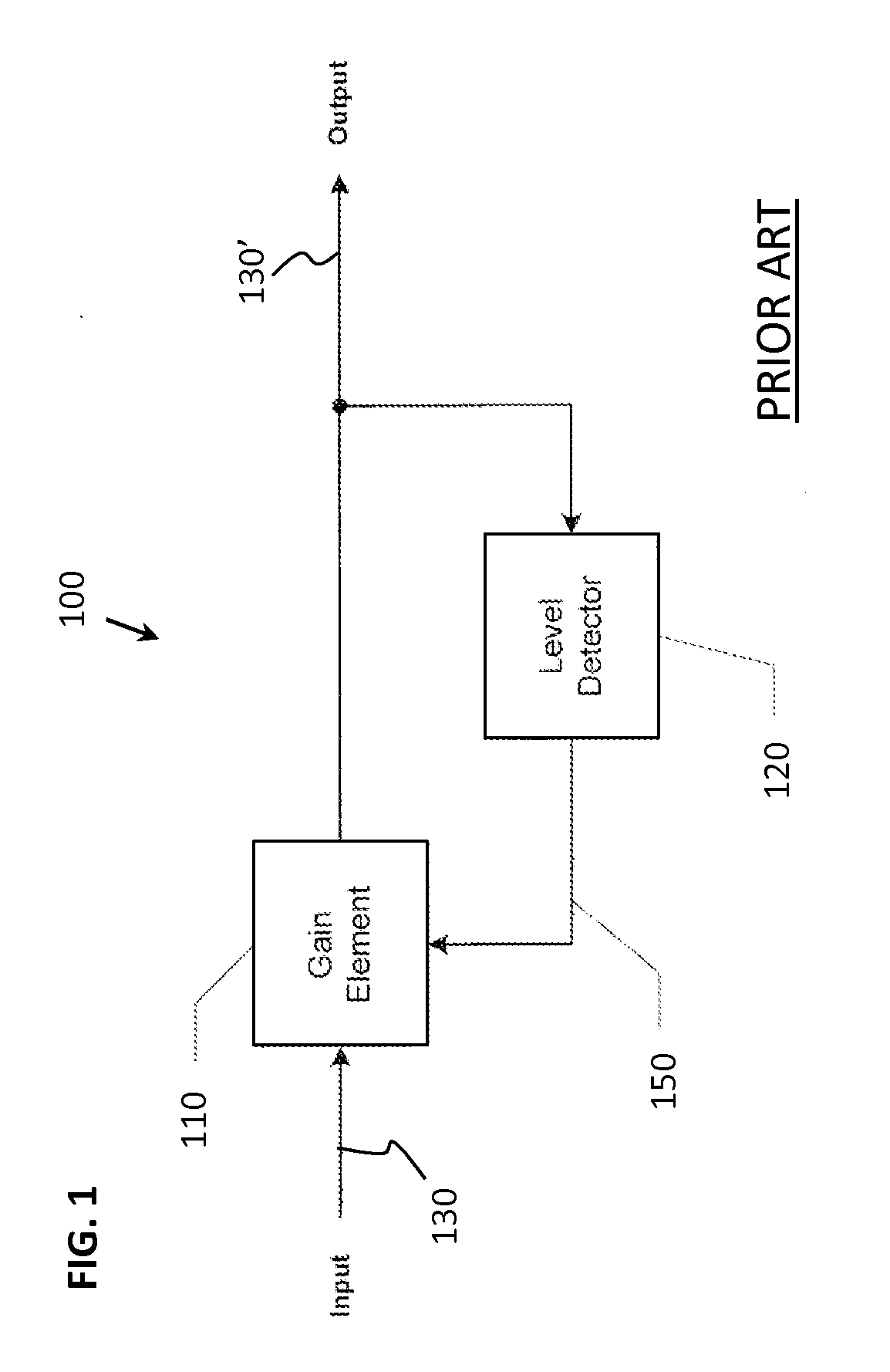Hybrid permanent/reversible dynamic range control system
a dynamic range control and permanent technology, applied in gain control, electrical transducers, instruments, etc., can solve the problems of viewer or listener complaints, unfavorable consumer environments for large variations in loudness or dynamic range,
- Summary
- Abstract
- Description
- Claims
- Application Information
AI Technical Summary
Benefits of technology
Problems solved by technology
Method used
Image
Examples
Embodiment Construction
[0042]Dynamic range of an applied audio signal can be directly and permanently adjusted by detecting the level of the audio signal and generating a control signal that is used to adjust the gain of the audio higher if it is lower than some reference or to adjust the gain of the audio signal lower if it is higher than some reference, a process commonly known as Automatic Gain Control (AGC).
[0043]Dynamic range of an applied audio signal can also be adjusted by detecting the level of the audio signal and generating a control signal that is passed as metadata along with the original audio to some receiving or decoding device where the control signal can be applied directly to adjust the gain of the audio higher if it is lower than some reference or to adjust the gain of the audio signal lower if it is higher than some reference. This control signal can also be scaled before application to produce less or more control of the audio signal, or the control signal can be ignored thus resulti...
PUM
 Login to View More
Login to View More Abstract
Description
Claims
Application Information
 Login to View More
Login to View More - R&D
- Intellectual Property
- Life Sciences
- Materials
- Tech Scout
- Unparalleled Data Quality
- Higher Quality Content
- 60% Fewer Hallucinations
Browse by: Latest US Patents, China's latest patents, Technical Efficacy Thesaurus, Application Domain, Technology Topic, Popular Technical Reports.
© 2025 PatSnap. All rights reserved.Legal|Privacy policy|Modern Slavery Act Transparency Statement|Sitemap|About US| Contact US: help@patsnap.com



